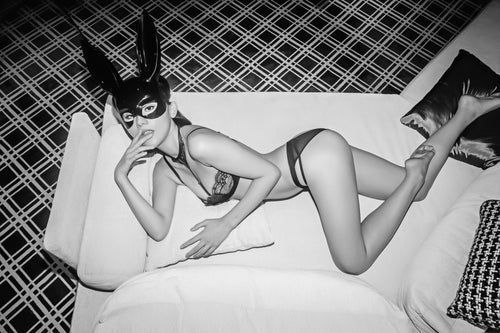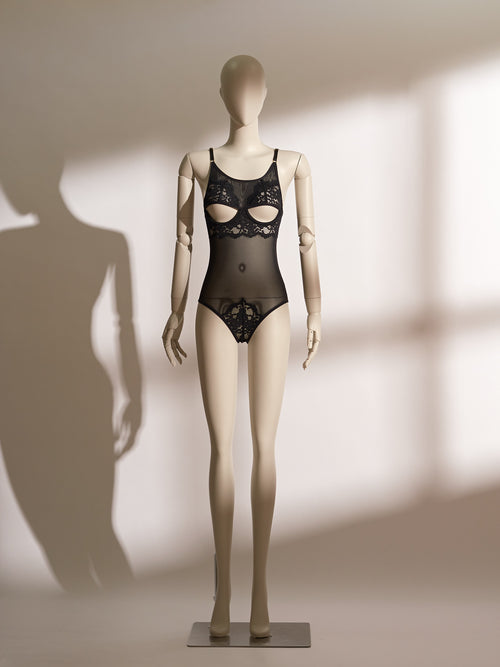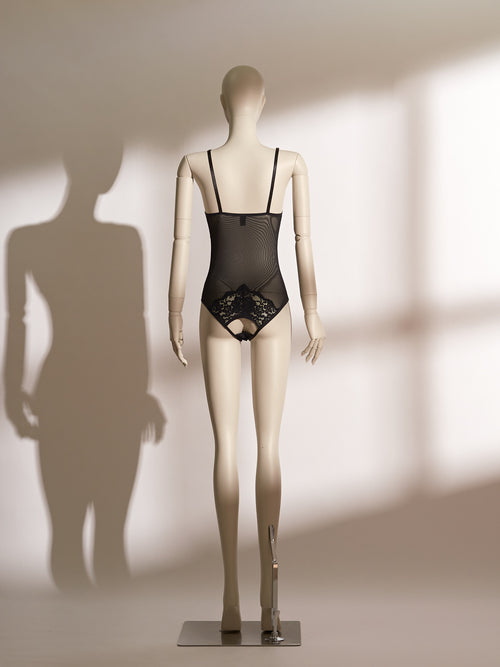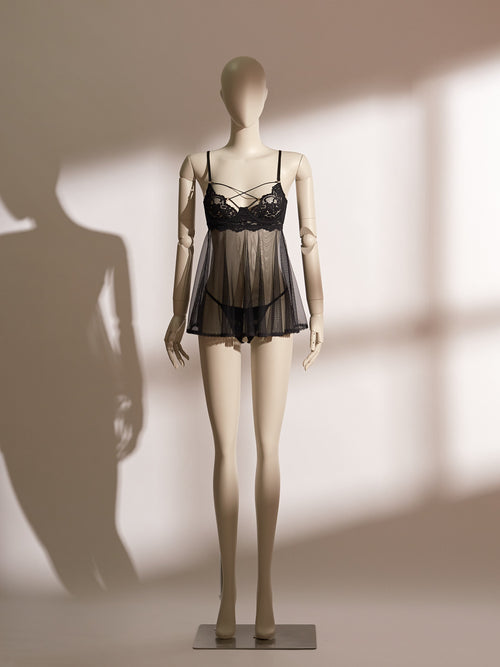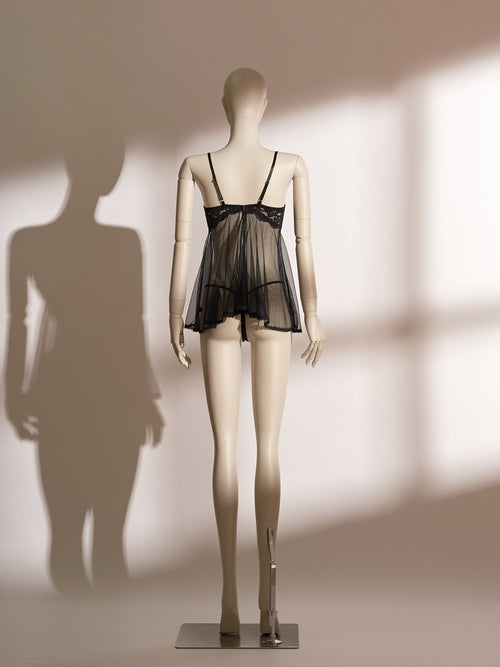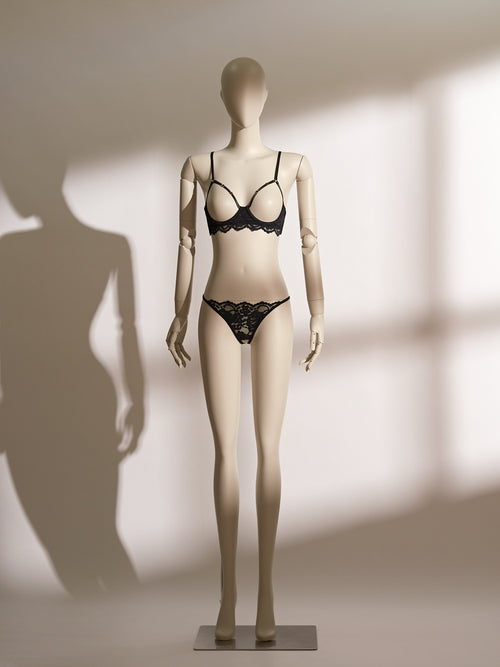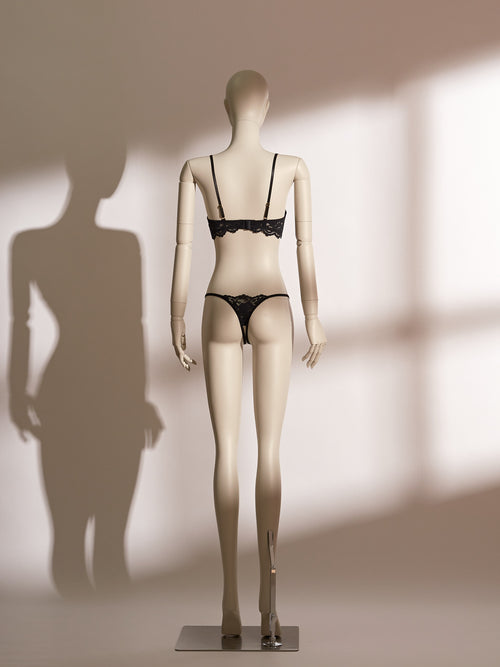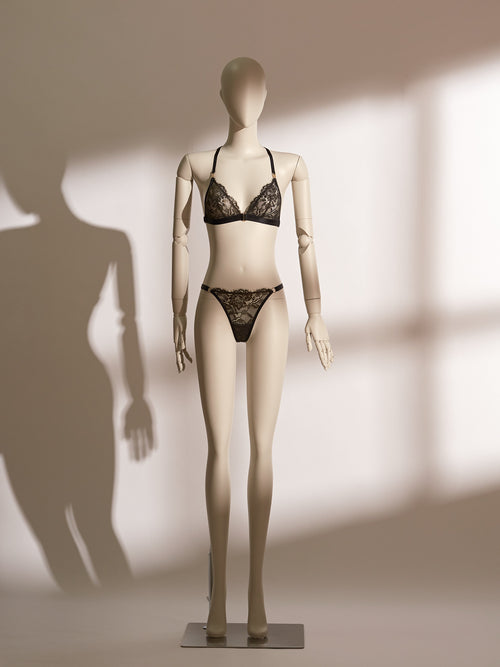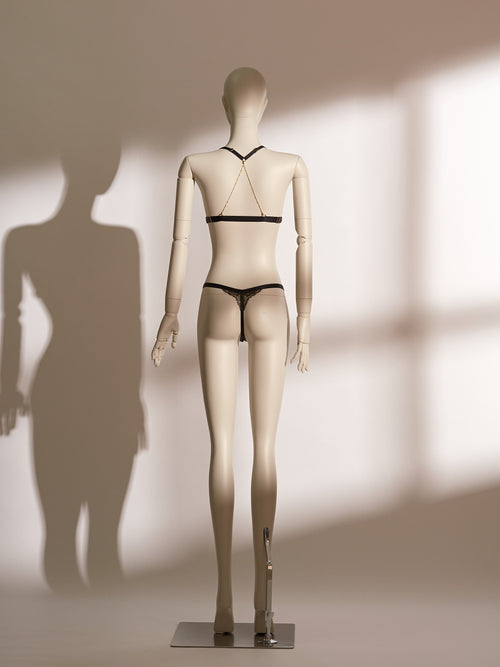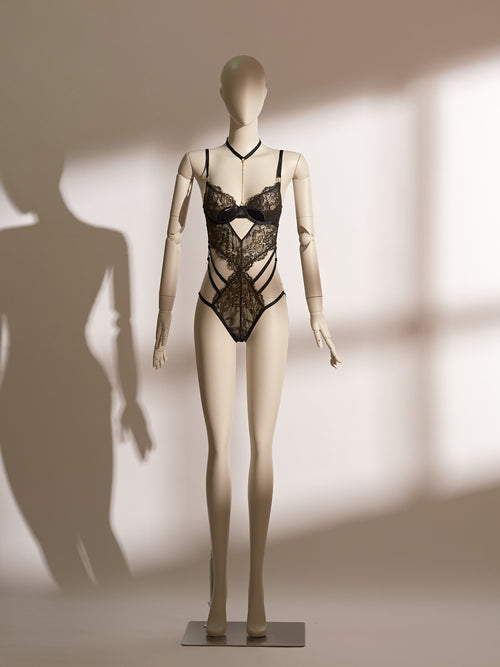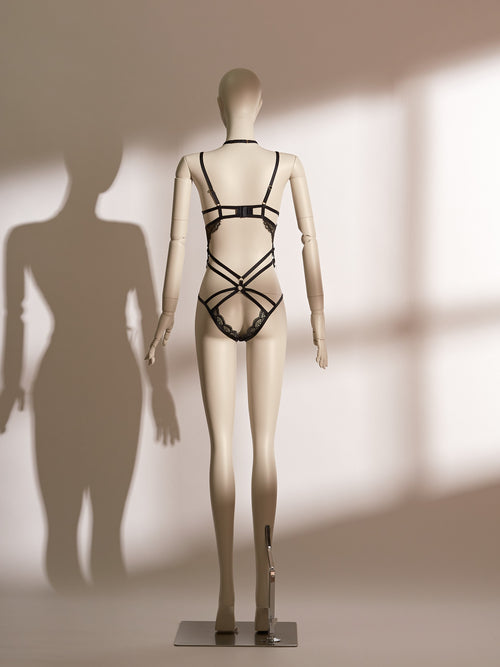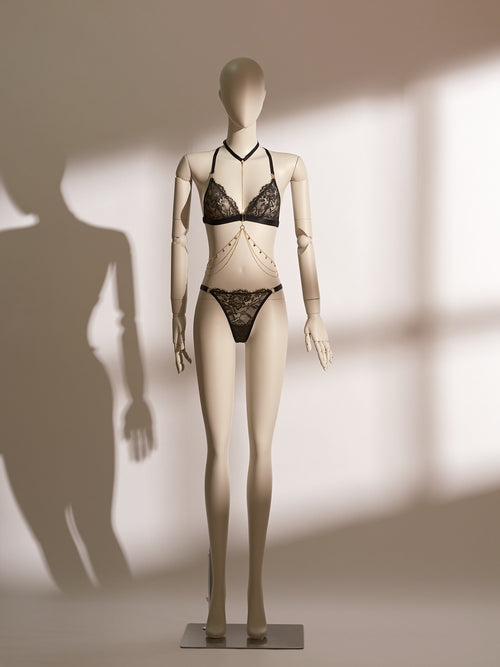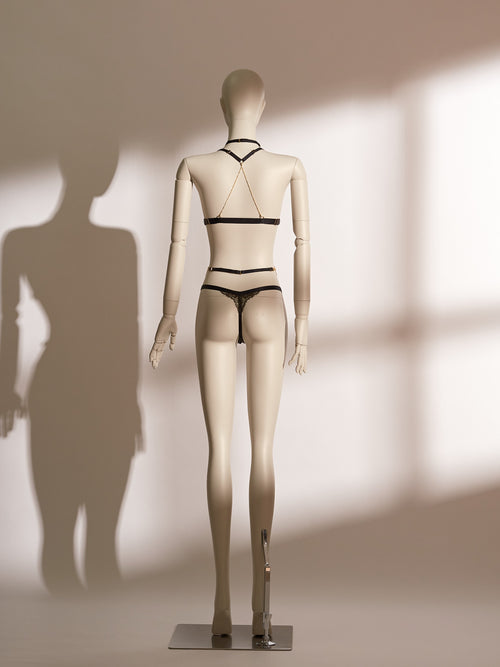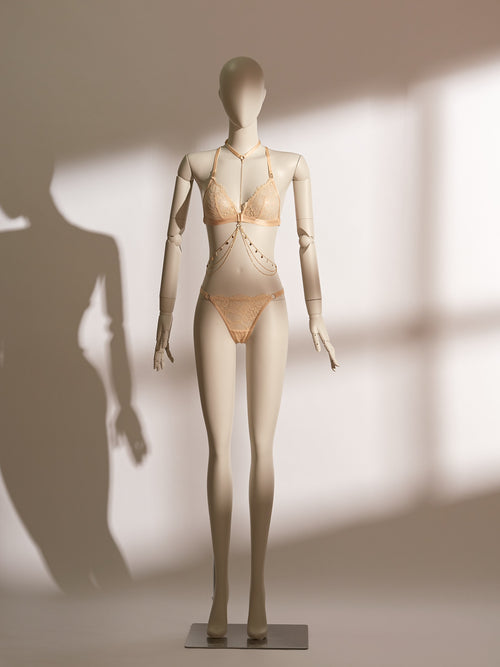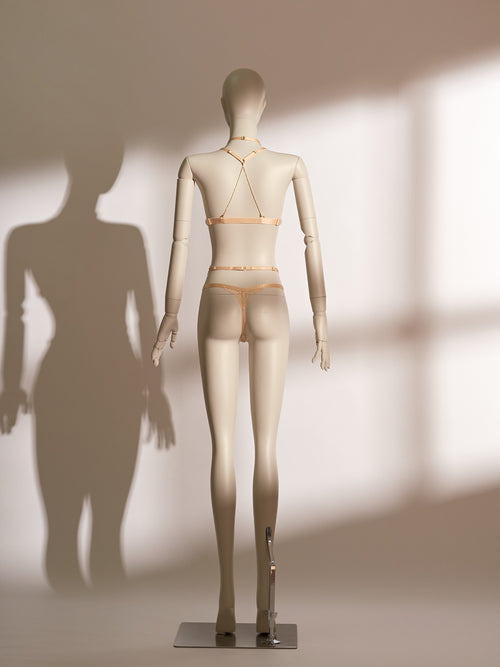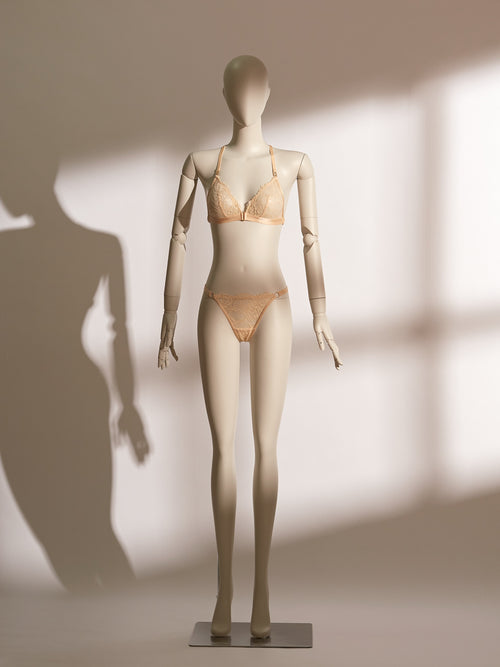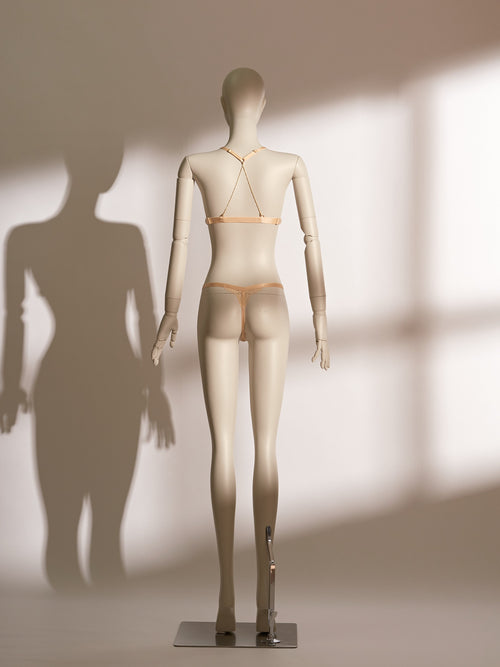Welcome to our store
Introduction
At one time, sexy fashion was a central pillar of modern style—an unapologetic expression of confidence, sensuality, and beauty. Lace bodysuits, sheer panels, silk lingerie: these were not niche items, but mainstream products, sold with poise and aspiration. Entire industries flourished around the aesthetics of intimacy.
Today, that same space is fractured.
As demonstrated by the recent Sydney Sweeney x American Eagle campaign—which reignited cultural tensions online over body image, empowerment, and gender expression—sexy fashion has become a flashpoint in a broader social struggle. The conversation is no longer about cut, fabric, or design. It's about political narratives, ideological alignment, and the limits of cultural tolerance.
This piece examines how sexy fashion became politically charged, how it lost the cultural clarity it once enjoyed, and what that means for brands navigating today’s marketplace.

1. A Brief History of Sexy Fashion
The sensual dimension of fashion has long been part of human self-expression. From the draped silhouettes of ancient Greece to the tightly structured corsets of 18th-century Europe, garments have consistently reflected cultural attitudes toward the body, intimacy, and power.
The 20th century ushered in a golden age. Following the upheaval of two world wars, post-war fashion turned toward liberation—of both body and desire. Lingerie brands emerged not simply as purveyors of undergarments, but as cultural markers: Victoria’s Secret in the U.S., Chantal Thomass in France, and La Perla in Italy became household names, selling not just products but fantasies.
By the late 1990s and early 2000s, sexy lingerie was not only normalized—it was aspirational. Mainstream fashion houses integrated lingerie styling into ready-to-wear collections. Runway shows became theatrical celebrations of sensuality. Retail reflected the moment: intimate apparel was big business, and the market responded accordingly.
2. Politics Enters the Fitting Room
The cultural winds began shifting in the 2010s. The rise of social justice discourse, combined with fourth-wave feminism and an expanding digital ecosystem, introduced new frameworks for interpreting fashion—especially fashion that celebrated the body.
Terms like “representation,” “empowerment,” and “inclusivity” took center stage. Lingerie, once prized for its subtlety and suggestion, was now scrutinized for who it did—or did not—include. Brands responded with campaigns touting diversity and body positivity, often accompanied by public apologies for prior “objectification” or lack of representation.
But in the rush to align with political trends, many brands found themselves compromising on aesthetic clarity, alienating long-time customers while struggling to connect authentically with new ones.
What began as a push for visibility morphed into a pressure to conform to rapidly shifting cultural expectations. In the process, sexy fashion lost its footing—not because beauty became irrelevant, but because brands became afraid to stand behind it.
3. The Social Media Dilemma
Digital platforms, once lauded for democratizing access to fashion, became a minefield for lingerie and intimate apparel brands.
Instagram and Facebook imposed increasingly opaque restrictions on “sexually suggestive content,” a category so vaguely defined that even artistic photography and product flat-lays were flagged or suppressed. Paid advertising in the category all but disappeared, rendering traditional brand-building strategies obsolete for many smaller labels.
At the same time, platforms like X (formerly Twitter) devolved into hyper-polarized forums, where any visual content—even a simple ad campaign—was at risk of becoming politically charged. The 21-second Sydney Sweeney ad campaign for American Eagle serves as a case study: a short, relatively tame denim ad prompted days of online disputes over “male gaze,” “body neutrality,” and the politics of femininity.
Caught between algorithmic censorship and public outrage cycles, brands have increasingly opted for safer, less expressive content. But in doing so, they’ve weakened their connection to the very values that once defined the category: sensuality, elegance, and emotional presence.
4. What We Lost Along the Way
What’s most striking about the evolution of sexy fashion isn’t just what changed—but what disappeared.
There is now little space in mainstream fashion discourse for healthy aesthetics—design philosophies that celebrate proportion, body intelligence, material intimacy, and emotional resonance. In their place are content strategies centered around ideology, virtue-signaling, and hollow slogans.
A well-constructed lingerie set used to convey emotion, narrative, and seduction. Now, it is often reduced to a statement of compliance: designed to meet platform guidelines, not stir imagination.
This cultural loss is not abstract. The aesthetics of confidence, beauty, and desire—once central to fashion—have been subordinated to risk-aversion and controversy management. And the consumer is left navigating a landscape where nothing inspires, and everything feels engineered.
5. Signals from the Market
Despite the fog of political discourse, the market continues to send clear signals. The public still responds to beauty—perhaps now more than ever.
The viral success of the Sydney Sweeney x American Eagle campaign suggests that consumers crave emotional clarity and aesthetic sincerity. It wasn’t the celebrity alone that drew attention—it was the ad’s unapologetic embrace of physicality and style, presented without moral posturing.
This moment underscores a broader trend: consumers are fatigued by performance marketing. They’re seeking products—and brands—that simply make them feel something again.
6. A Path Forward for the Lingerie Industry
Sexy lingerie is not culturally obsolete. It is ideologically displaced. To reclaim its relevance, the industry must shift from reactive positioning to purposeful design.
Key strategies include:
- Precision targeting: Brands should serve niche communities with depth and intent—not broad audiences with generic messaging.
- Design integrity: Materials, construction, and function must speak louder than slogans.
- Narrative control: Instead of reacting to external criticism, brands must define their aesthetic values clearly and unapologetically.
- Channel diversification: Overreliance on legacy platforms is risky. Smart diversification means combining visual-first platforms like X and Pinterest with owned channels—email, blogs, and SMS—for long-term control and deeper engagement.
Some niche brands—particularly those serving underrepresented relationship dynamics or identity groups—have found success by offering specific, functional, and emotionally resonant design solutions. This level of focus reflects a kind of modern craftsmanship that is largely absent from most mass-market campaigns today.
Conclusion: Beyond the Culture War
Sexy fashion never asked to be ideological. It became collateral damage in a wider societal shift—where aesthetics were politicized, and commercial design was expected to carry cultural weight far beyond its remit.
The lingerie industry must now decide: will it continue pandering to fear, or reassert its commitment to expression, beauty, and boldness?
To do the latter will require risk. But history suggests that when fashion dares to move ahead of culture—not just follow it—it leaves its most lasting impact.
There is still space for lingerie that whispers, suggests, and seduces. There is still a future for design that believes in the intelligence of the body and the poetry of form.
But that future will belong to the brands that remember: beauty isn’t something to apologize for.
It’s something to build with.
If this speaks to you, come explore our own approach to lingerie. At Mismuse, we believe in ethically made lingerie, precision, pleasure, and the power of garments that make you feel unmistakably yourself.

